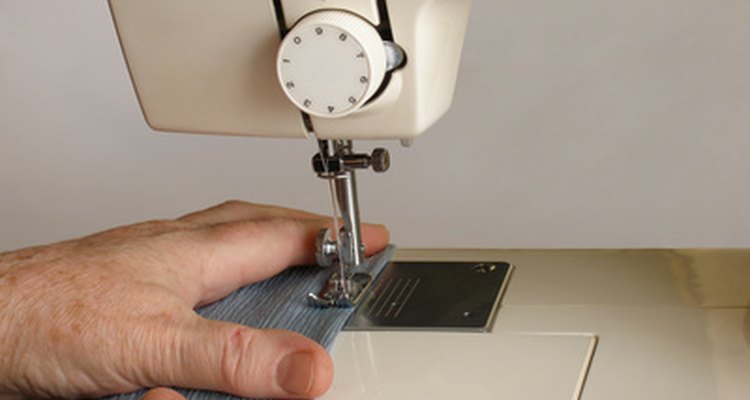
A seamstress independent contractor agreement is a typical two-party contract between a company and a seamstress. The company retains the services of and obligates the seamstress to perform the duties of the contract for consideration, or a prescribed amount. For example, in reference to a wedding event, the parties to the contract outline terms and conditions and compensation arrangements. Constructing a seamstress independent contractor agreement requires knowledge of certain factors.
Type “Independent Contractor Agreement” at the top of the contract. Compose a sentence to write on each line the month, day and year the parties sign the agreement.
Create two parties to the contract. Write the names and contact information of each party to the agreement on the appropriate lines. Distinguish between the company and the independent contractor, or the seamstress.
Outline the terms of the agreement. Insert a description of the date and location of the event or place to deliver the finished product. Include additional descriptions of the materials required for the seamstress to use, the number of scheduled fittings and the final delivery date.
Draft the conditions for the compensation arrangements. Include a provision outlining the company’s duty to pay a deposit to the seamstress, and add a due date. Use wording such as “before seamstress renders services” to refer to the company’s obligation to pay the down payment.
Include a cancellation clause in which each party may terminate the contract at anytime before the final scheduled delivery date. Insert a provision for cancellation fines and refunds to refer to the company’s obligation to pay for services the seamstress has rendered to date. Put in an additional clause to refer to the seamstress’s duty to refund any additional advanced payments for services not completed.
Construct a reimbursable expenses clause to outline the company’s obligation to the independent contract to pay for transportation and/or hotel expenses related to the terms of the agreement. Include the name and contact information of the motor carrier and any additional information related to the insurance provider.
Add an indemnity clause in which the seamstress holds the company harmless in case of an accident and agrees to become a co-insurer of the policy. Outline the insurance and contractor fee arrangements for each party.
Insert an additional work made for hire clause in which the seamstress agrees to grant and convey rights to and title in the finished product to the company. Create signature, date and notary lines for each party to signify agreement.
Related Articles

How to Get a Tax Exempt Certificate for ...

How to Apply for Welfare Benefits in ...

How to Create a Class Reunion Database

How Do I Find Out the Tax ID Number for ...

How to Advertise in Church Bulletins

Is Effective Communication a Two-Way ...

How to Make a Complaint to Mississippi ...

Etiquette of Listing the Deceased ...

How to Prepare a Church Charter

How to Set Up a High School Reunion ...

How to Legally Change a Child's Last ...

How to Get a Replacement Birth ...

Banquet Planning Checklist

How to File for Legal Separation in ...

How to Write a Letter of Intent to ...

How to Open a Daycare in North Carolina

How to Critique an Event

How to Apply for a Long-Form Birth ...

How to Change Your Name in Harris ...

How to Write an Invitation to a Public ...
Writer Bio
I am currently an Adjunct English Instructor (vendor). I teach English, ESL, and writing (composition). My blog focuses on helping students use margin comments as tools for revising their essays. I have published a full textbook version of the glossary and mini glossaries. The book has been approved and adopted by two major universities.
Photo Credits
seamstress image by Denis from Fotolia.com